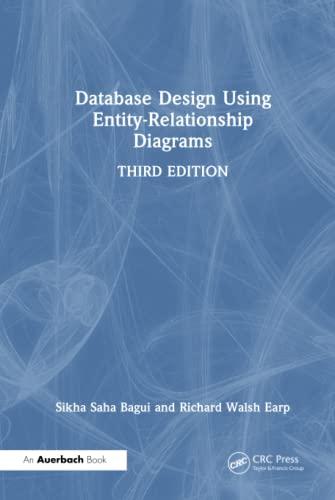Question
MIPS Assembly Language QTSpim Do all calculations using double precision floating point representation. This means that you must do the input and output as type
MIPS Assembly Language QTSpim
Do all calculations using double precision floating point representation. This means that you must do the input and output as type double.
Use functions for all calculations. This means that you need a function to calculate the length of the x and y lines, the square of the length of the line between the points and the area of the circle, square and rectangle (5 functions). I did some of this as an example, so I am giving you this code. You do not need to write functions to do the input or output if you dont want to. The circle, square and rectangle functions should output the results.
Do not use the menu from lab 3. Instead, write a main program that consists of getting the four input values, calls the circle function and returns, calls the square function and returns, calls the rectangle function and returns and terminates. The circle, square and rectangle functions will need to call the other functions in order to do their job. Therefore, you will have nested function calls. You will need save some of the return addresses in places other than register $ra. You can do this with the jalr instruction or by using the stack.
Test the program using the following data:
x1: 1, y1: 1, x2: 2, y2: 2 Circle Area: 6.2382 Square Area: 2.0 Rectangle Area: 1.0
x1: 3, y1: 5, x2: 7, y2: 9 Circle Area 100.5312 Square Area: 32.0 Rectangle Area: 16.0
This is what i have
.data prompt: .asciiz "Enter 1 For circle, 2 For Square, 3 For rectangle, 0 to exit: " #prompt for choicing area shapes point: .asciiz "Enter value for x1 y1 x2 y2" cirarea: .asciiz "Area of circle is: " sqarea: .asciiz "Area of square is: " recarea: .asciiz "Area of rectangle is: " .text .globl main main:
loop: #loop for user choice li $v0, 4 la $a0, prompt #prints prompt syscall li $v0, 5 syscall #ask user input move $t1, $v0 #store user input in t1 #loops beqz $t1, exit #branch if user input 0 exit program beq $t1, 1, circle #branch if user input is equal to a 1, goes to circle area beq $t1, 2, square #branch if user input is equal to a 2, goes to square area beq $t1, 3, rectangle #branch if user input is equal to a 3, goes to rectangle area j loop #1 circle: li $v0, 4 la $a0, point #user inputs label for x and y points syscall li $v0,5 syscall #ask user input move $t1, $v0 #store input in t1 li $v0, 5 syscall #ask user input move $t2, $v0 #store input in t2 li $v0,5 syscall #ask user input move $t3, $v0 #store input in t3 li $v0, 5 syscall #ask user input move $t4, $v0 #store input in t4 sub $s0, $t1, $t3 #subtracts x2-x1 sub $s1, $t2, $t4 #subtractsy2-y1 mul $s0, $s0, $s0 #squares value by multiplying itself from s0 mul $s1, $s1, $s1 #squares value by multiplying itself from s1 add $s2, $s0, $s1 #add values in s0 and s1 and mul $s2, $s2, 314156 #mul by PI div $s2, $s2, 100000 #divide by 100000 li $v0, 4 la $a0, cirarea #prints circle label syscall li $v0, 1 move $a0, $s2 syscall
#2 square: li $v0, 4 la $a0, point #it will print prompt syscall li $v0, 5 syscall #ask user input move $t1, $v0 #store user input t1 li $v0, 5 syscall #ask user input move $t2, $v0 #store user input t2 li $v0,5 syscall #ask user input move $t3, $v0 #store user input t3 li $v0, 5 syscall #ask user input move $t4, $v0 #store user input t4 sub $s0, $t1, $t3 #subtracts values from t1 and t3 stores in s0 sub $s1, $t2, $t4 #subtracts values from t2 and t4 stores in s1 mul $s0, $s0, $s0 #multiply s0 by s0 mul $s1, $s1, $s1 #multiply s1 by s1 add $s2, $s0, $s1 #add values in s0 and s1 stores in s2 li $v0, 4 la $a0, sqarea #prints square label syscall li $v0, 1 move $a0, $s2 syscall #3 rectangle: li $v0, 4 la $a0, point #it will print prompt syscall li $v0, 5 syscall #ask user input move $t1, $v0 #store user input in t1 li $v0, 5 syscall #ask user input move $t2, $v0 #store user input in t2 li $v0, 5 syscall #ask user input move $t3, $v0 #store user input in t3 li $v0, 5 syscall #ask user input move $t4, $v0 #store user input in t4 sub $s0, $t1, $t3 #subtracts values in t3 and t1 stores in s0 sub $s1, $t2, $t4 #subtracts values in t4 and t2 stores in s1 mul $s2, $s0, $s1 #multiplies values in s1 and s0 stores in s2 li $v0, 4 la $a0, recarea #it will print prompt syscall li $v0, 1 move $a0, $s2 syscall # END OF PROGRAM li $v0, 10 syscall
Step by Step Solution
There are 3 Steps involved in it
Step: 1

Get Instant Access to Expert-Tailored Solutions
See step-by-step solutions with expert insights and AI powered tools for academic success
Step: 2

Step: 3

Ace Your Homework with AI
Get the answers you need in no time with our AI-driven, step-by-step assistance
Get Started


